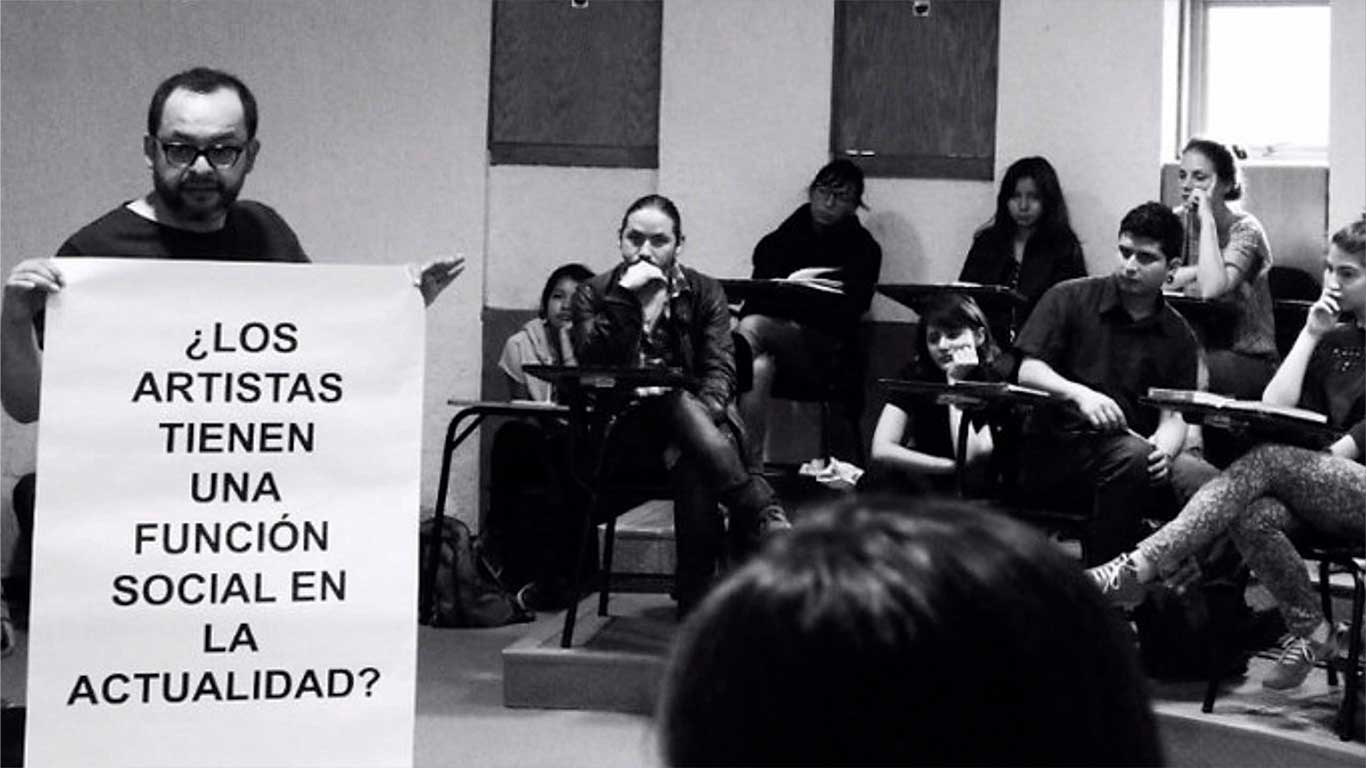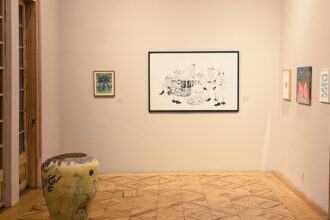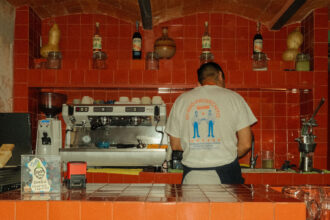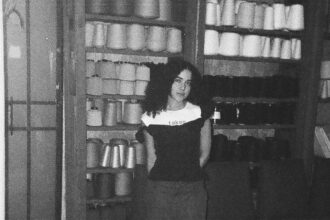Misrepresented: The importance of looking at the UNREPRESENTED
Misrepresented is a curatorial initiative developed by Proyectos Públicos, whose purpose is to vindicate the production of artists who, despite having a consolidated practice, have been relegated from the circuits of institutional recognition and collecting. Through exhibitions articulated around commissions and thematic frameworks linked to artistic genres, this project is proposed as a platform for support and visibility.
The inaugural edition, entitled Landscapestook place in February 2025 in Barcelona, one of our venues in Colonia Juárez, laying the groundwork for the establishment of an annual support model. The following essay, written by David Miranda, chief curator of the Museo Experimental El Eco and curator of the project, offers a reflection on the place of art and its ethical and political implications in the context of Mexico today.
I have dedicated more than twenty years to curating, producing and teaching art, both in Mexico and abroad. During this time, I have had the opportunity and privilege of working with emerging, mid-career and established artists, accompanying them in their processes. I have curated several historical archive exhibitions and I have been curator of public and private collections. And, to top it off, I combine these activities with my work as an artist. Sounds glamorous, doesn't it? The reality is a bit more complex.
I will try to outline here a reflection on the acts of resistance involved in dedicating oneself to art and culture in a consumer society like today's. I am convinced that the country's artistic-cultural activity remains one of the most relevant values of our time. I am convinced that the country's artistic-cultural activity continues to be one of the most relevant values of our time, since it represents a safe, significant and favorable investment for public development. I believe that all sectors of productive society should allocate a percentage of their profits to art. Why? Because a healthy society should use part of its resources to preserve fundamental values such as identity, expression and creativity. Since artistic practice naturally harbors these values, art should occupy a central place in the public development of societies.
In this sense, it is worth noting that artistic practice should not be seen as mere entertainment, but as a way to confront the utilitarian world, promoting a necessary reflection to discover other ways of seeing and living together, beyond consumption. Despite the fact that we live in an era dominated by the rule of material aesthetics, the artistic profession is not considered a relevant activity in the political and economic configuration of the nation-state. In general, cultural policies in Mexico have operated under the logic of defining the cultural field as a set of organic employees of the official narrative. Some creators have accepted as part of their work the production of images for ideological propaganda, forgetting the possibility of exercising their practice as facilitators of creative processes or as articulators of works that allow the self-criticism necessary for the self-regulation of power.
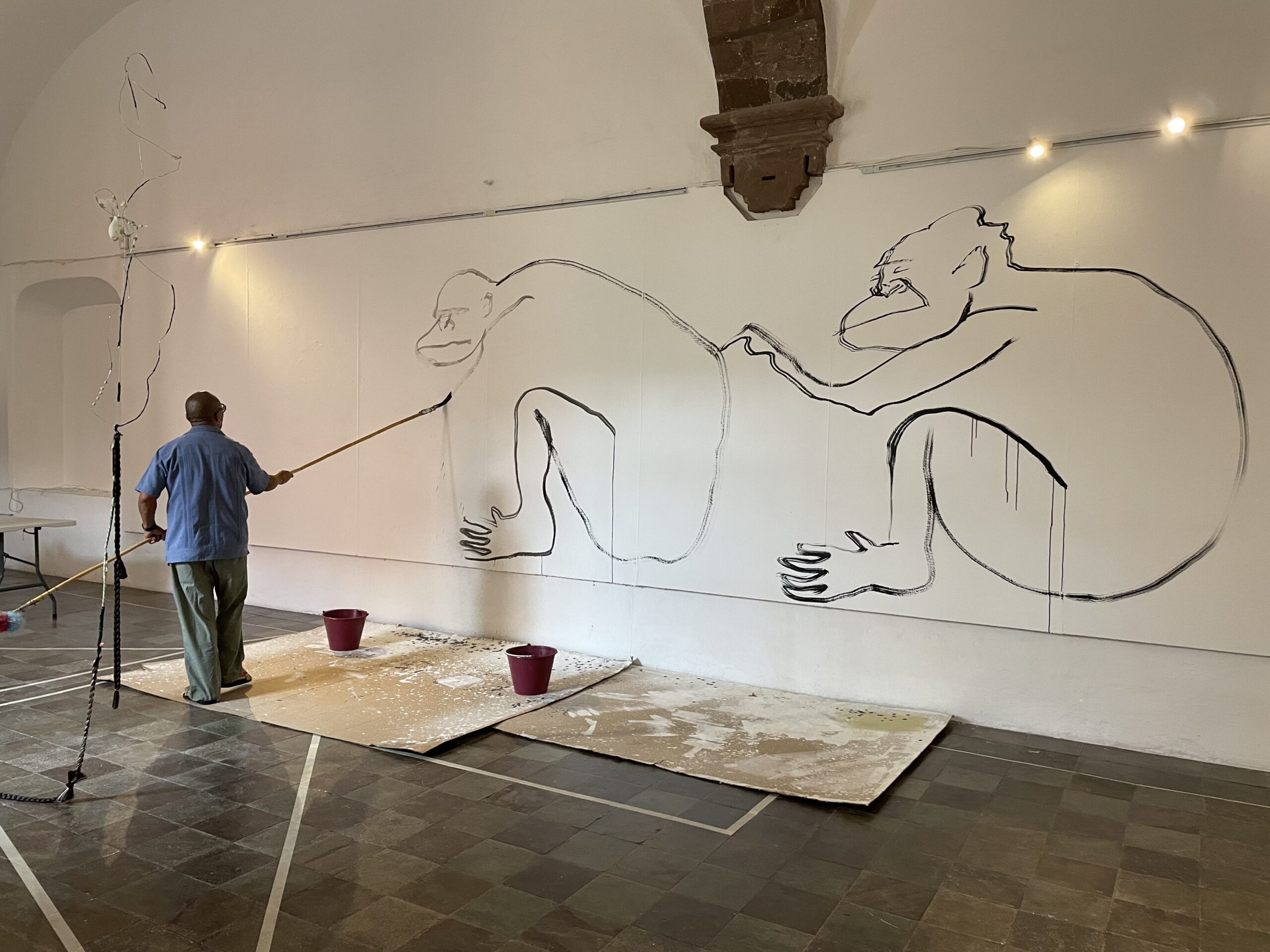
Abraham Cruzvillegas in San Miguel de Allende, 2022. Courtesy of the author.
There are also artistic trajectories based on the homologation of productivist models. We can identify this phenomenon when we stop talking about the individual and start referring to artists in terms of "studios", as if they were factories or visual communication offices. or offices of visual communication.
I mentioned at the beginning some of the activities in which I have participated in the artistic field, because in them I have been able to confirm that an art professional in Mexico, in general, must cover several fronts. Few are those who can dedicate themselves exclusively to the creation of their work. Usually, an artist in Mexico wanders between production, teaching (schooled and unschooled), and also between tasks related to the distribution and commercialization of works of artists better positioned in the market. in the market. Some work in public or private cultural institutions as facilitators and event coordinators.
All these people are experts and practitioners at the same time. In this sense, Mexico has one of the most complex cultural communities in the global art field: those who mount exhibitions or move works may also be artists with a trajectory. Despite the fact that the Mexican art scene has an extremely dynamic artistic life, there are not enough forums or structures that allow most art school graduates to dedicate themselves immediately to creation.
The market also has its limitations, regardless of the power structures it represents. It is not only about who buys and how, but how many people are in a position to do so and why. Many people would be surprised at how accessible it is to consume art in Mexico, both materially and mediatically. The problem is that art is still associated with a condition of privilege for a reduced sector of "connoisseurs" and not as a public phenomenon that anyone can be part of. Undoubtedly, it is also a problem of dissemination.
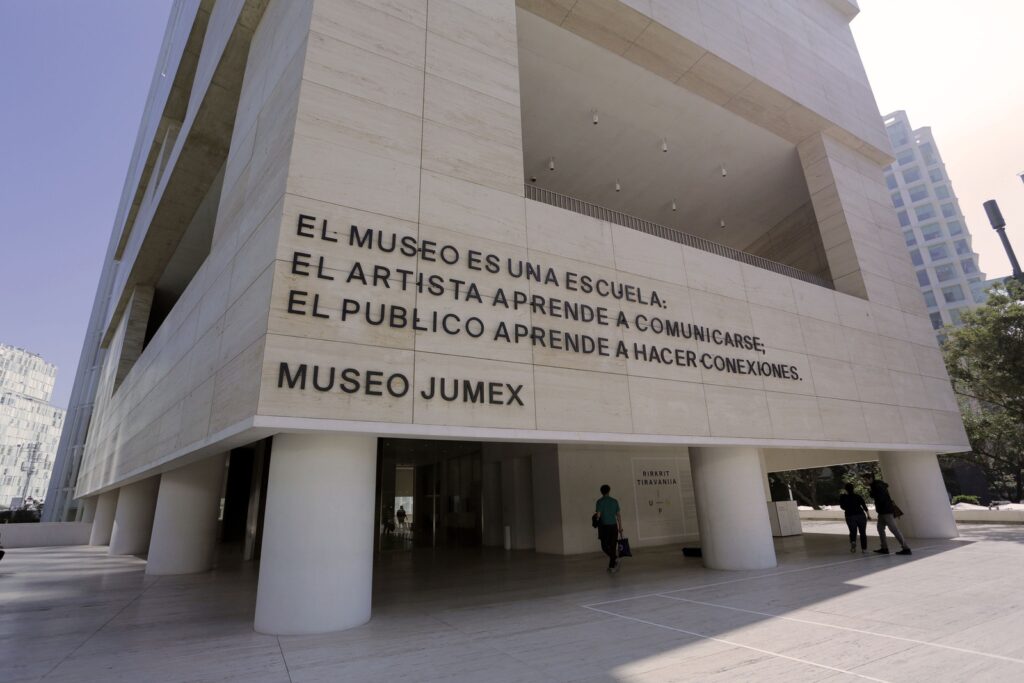
Luis Camnitzer, The Museum is a School, 2015. Via Museo Jumex.
The Spanish playwright Pedro Calderón de la Barca, in his play La vida es sueño, said: "Art is a very high garden, but with open doors". Hence, some of us professional actors in the field think that artistic practice should have different supports that favor its visibility. In addition to the scholarships to creators promoted by the State, there should be more efficient tax models that encourage collecting at all levels. Anyone should be able to deduct, in a simple way, part of their assets invested in art, since this symbolic production is an indisputable collective good.
The problems derived from commercial operations can be solved with a clear tax structure that recognizes the artistic profession as well as others in civil society (medicine, accounting, engineering, etc.). The problem also lies in the fact that
many people dedicated to this activity are not willing to be considered part of the conventional social structure, since the romantic aura that presents the artist as an independent, free and brilliant individual still prevails. However, for a society as materially interconnected as today's, an individual with a supposed independence and genius separated from social needs is a burden and an anachronism.
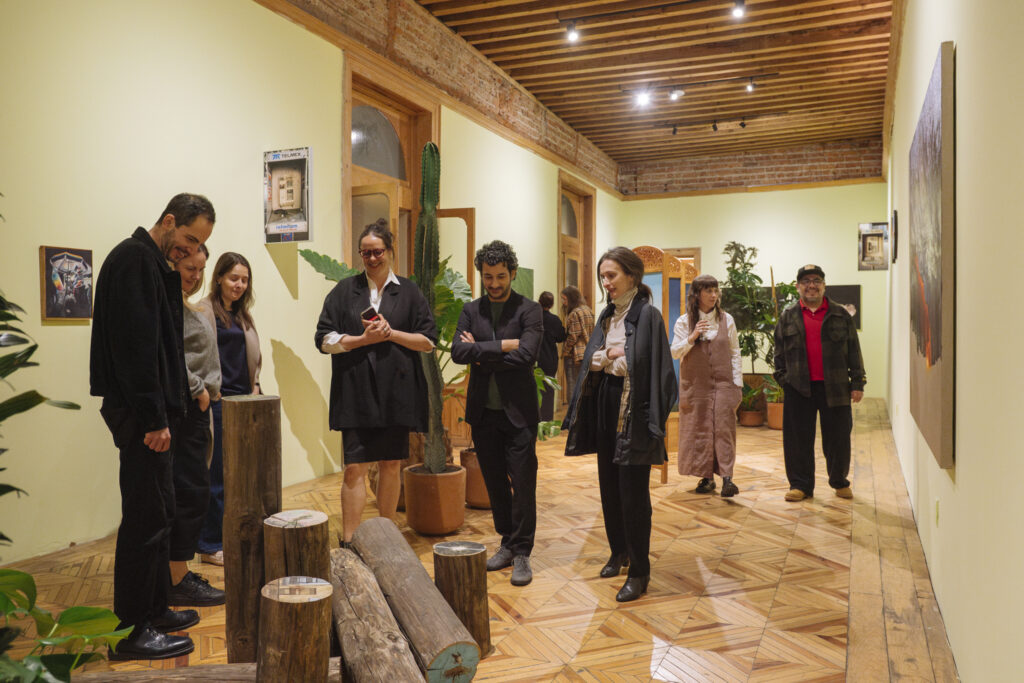
Misrepresented (Landscapes), Barcelona, Mexico City, 2025.
Making art exhibitions pursues several objectives: one is to give visibility to the artistic expression of someone who has dedicated his time to create a singular statement from his practice; another is to build a transversal story that contributes a reflection from an artistic discipline; and also, to recognize the potential of the imaginative field. Imagination is one of the most disdained resources in today's consumer society, where it is associated with a sort of romantic nihilism. I believe that, today more than ever, we must vindicate the imagination as a transforming power of society. Educating the new generations in the imaginative faculties of the intellect is fundamental to preserve a civic condition, and not merely a consumerist one. Producing exhibitions is important, but it is even more important to see them.
In my hesitant defense of this text, I can say that all this reflective drift around artistic practice has come from doing and seeing exhibitions.
More than a year ago I spoke with Mexican entrepreneur and patron of the arts, Pepe Islas, and he told me about an encounter about an encounter in a restaurant in Oaxaca, where he saw a work that captivated him. He asked the owner of the establishment about the painting of the Oaxacan mangroves, with the intention of buying it, and to his surprise, the woman refused to sell it, as it had been made especially for her and her place. Generously, she gave him the artist's contact information.
Avelino Hernández was born in San Bartolo Coyotepec in 1979, into a family of black clay artisans. In the mornings he works in a state hospital, in the children's oncology area. In the afternoons, he devotes time to his family, and in the evenings he paints. She has
presented his work at the Museum of Popular Art of Oaxaca and at the Gallery of the School of Fine Arts of the UABJO. In 2001, he was even president of the Cultural Commission of the City Council of San Bartolo Coyotepec.
Pepe showed me the work and I found his technical and conceptual approach very interesting. We thought of all the people who, like Avelino, need support to make their work visible, and we decided to create a platform to support this type of trajectory.
Misrepresented was born as an initiative that seeks to give recognition, exposure and diffusion to the work of artists who, throughout their careers, have not been able to establish the necessary notoriety to promote the collecting of their work within the art system. Materializing in an exhibition of commissioned works, based on a conceptual axis that alludes to an artistic genre, this will be developed by the artists involved to establish the curatorial and museographic framework of the project.
This project seeks to consolidate an annual platform that gives visibility to artists with a consolidated language, through commissions that stand as emblems of their creative practice, and that, in turn, present different ways of approaching an artistic genre in contemporary times. Unlike other platforms that exhibit work due to the emerging character of the artists without articulating a critical review, this project is based on common coincidences and concerns in the artistic field.
In this sense, it is a project that seeks to strengthen public dialogue on the issues that artists consider relevant to produce their work, beyond mere material speculation.
In 2025, the edition called Landscapes invited seven artists who have worked with this theme to collaborate on an exhibition that offered a broad interpretation of the concept. This allowed viewers to observe different notions of the term and to recognize its many
and recognize its multiple possibilities, through diverse practices and methodologies. The decision to initiate the platform with the theme of landscape functioned as a metaphor for the multiple scenarios and conditions in which artistic practice is developed, and how, in its distribution and consumption, the origin of those who have dedicated their lives to it is sometimes blurred.
Misrepresented is an initiative of Pepe Islas, under my curatorial coordination, with the production of Proyectos Públicos. It seeks to exhibit the work of artists who, for various reasons, have remained on the margins of the art system, recognizing diverse languages, aesthetics and modes of production that allow a broad public a different reflection on other contemporary art platforms.


